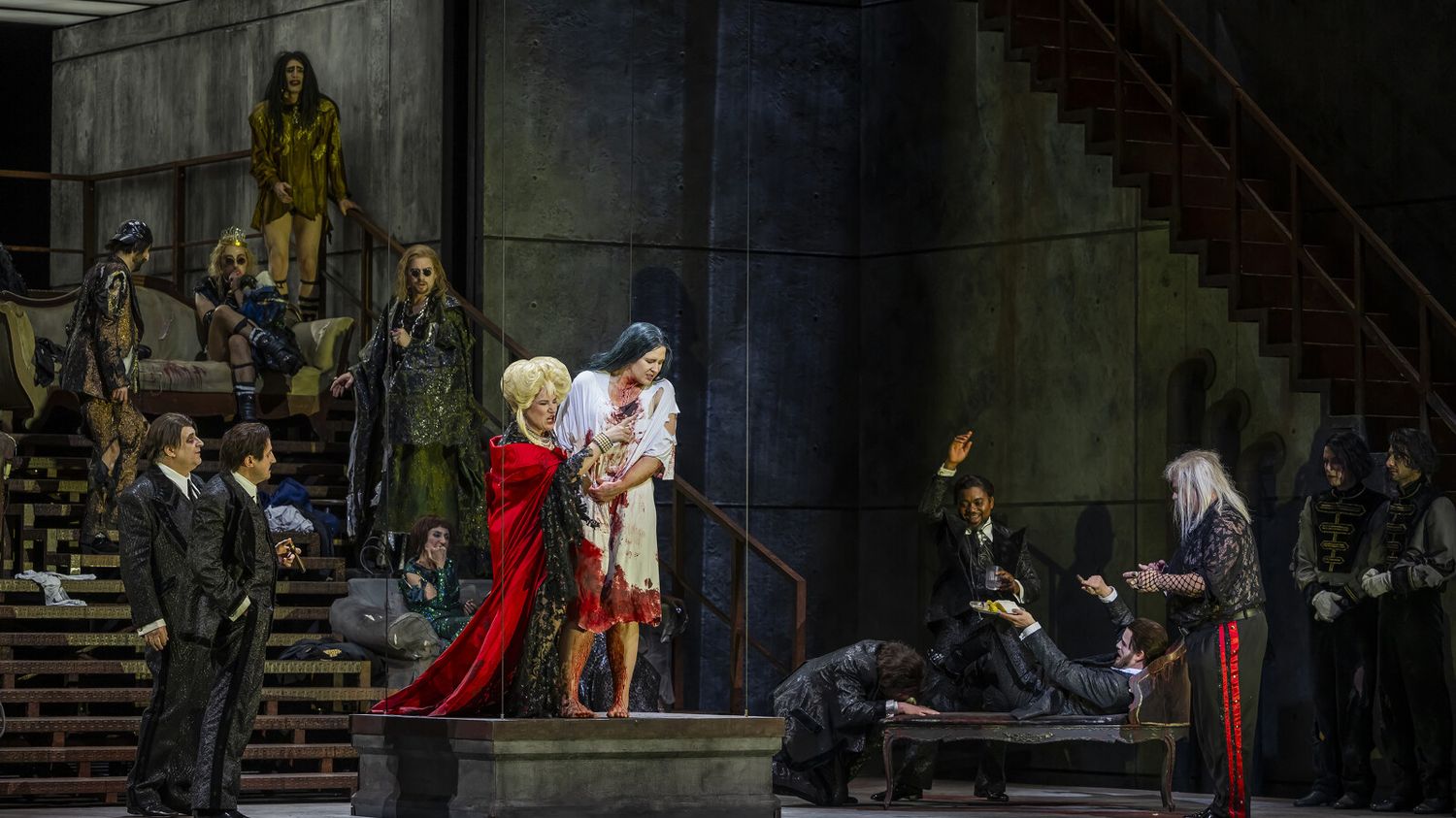Norwegian soprano Lise Davidsen thrilled the audience with her masterful interpretation of “Salomé” by Richard Strauss, in a transgressive staging by Lydia Steier.
Published
Reading time: 3 min

First of all, the obvious. Many talents shine on the stage of the Opéra Bastille for the most famous work of Richard Strauss, Salome : Lise Davidsen in the title role, Mark Wigglesworth on the baton and Lydia Steier on the production. Supported by all the other artists who move in a post-apocalyptic setting. The public had already been very surprised, two years ago, by the direction of the American Lydia Steier during the creation of her production at Bastille.
His version of Salome by Richard Strauss appears to be a radical provocation and a condemnation of overconsumption. The director depicts a decadent society, lacking ideals, which takes refuge in depravity and sexual orgies to stave off boredom. A society that hungers for eternal youth. Salomé is obsessed with what she cannot have: the prophet Iochanaan (John the Baptist).
The show opens with a Mussolini setting. On the first level, three over-equipped and over-armed soldiers, gravediggers in protective suits and employees carrying the corpses of young people. On the upper level, through a bay window, rich people feast in excess of debauchery. Out of sight, in the dungeons, Iochanaan. And Salomé, represented not as an oriental and mysterious beauty supposed to bewitch men, but as a psychopath, hurt by having been rejected, eager for revenge.
Another character in its own right: inspired music, formed of powerful waves, which ebb and flow with subtlety. The music accompanies Salomé and takes her even further. Norwegian soprano Lise Davidsen plays Salomé with impressive vocal range. She is also remarkable for her acting, especially in the “dance” scene. So, instead of offering a dance to her father-in-law, King Herod, who desires her, she offers herself to him physically. She then suffered an attack from the entire court. In exchange, she demands Jean-Baptiste’s head to kiss her mouth. Rape or prostitution? Lydia Steier leaves the audience free to interpret.

The future is now. Lydia Steier evokes the relationships of domination between men/women, elite/people… We also think of Brave new world by Aldous Huxley, sex replacing the happiness pill. Lydia Steier takes a completely different look at Salome. To original sensuality and seduction, it opposes death and sex. One of the most striking scenes, after that of the dance which illustrates this deadly duality, is the cry of hatred and love of Heriodias, interpreted remarkably by the mezzo-soprano Ekaterina Gubanova, who out of hatred of the prophet flirts with the ‘alienation. Salome, a work that questions our present and our future. Radical.
Title : Salome
Gender : Lyrical drama in one act (1905)
Based on the eponymous play by Oscar Wilde, in the German translation by Hedwig Lachmann
Music and libretto: Richard Strauss
Musical direction: Mark Wigglesworth
Staging: Lydia Steier
Dates: Until May 28, 2024
Distribution : Lise Davidsen, Johan Reuter, Gerhard Siegel, Ekaterina Gubanova, Pavol Breslik, Katharina Magiera, Matthäus Schmidlechner and Éric Huchet.
Synopsis: When King Herod promises his daughter-in-law Salome, princess of Judea, whatever she wants in exchange for a dance, he is far from suspecting that she will ask for… the head of the prophet Iokanaan (John the Baptist), worse, that she will kiss his mouth. If the story of Salome goes back to the Gospels, it is Oscar Wilde’s tragedy, written in 1891, which gives the myth all its power by closely mixing sexuality and religion, desire and death, obsession and decadence. Richard Strauss’s third opera keeps the sulphurous contours of the piece by adding vocal and orchestral music of great modernity, causing a scandal when it was created in Dresden in 1905.
